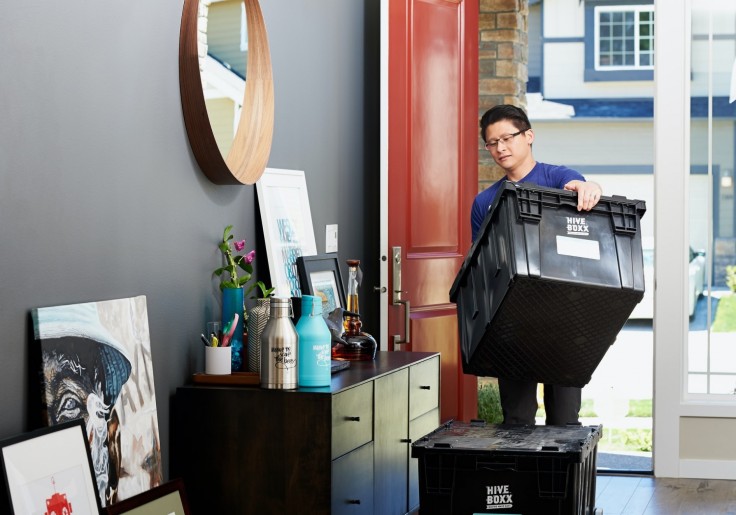
This very unusual year has presented us with a lot of changes - working from home, virtual schooling, no extracurricular activities - and a lot of the same with lockdowns and quarantine. These changes and being cooped up can be tough for kids to cope with.
As many have been spending more time at home, they are realizing that their current accommodations aren't fitting for spending so much time at home together as a family. In fact, even amid the pandemic, the Pew Research Center found that 1 in 5 American adults moved because of the pandemic or know someone who did.
Moving in itself is one of the most stressful life events, but moving during COVID-19 adds more anxiety and strain, and kids are very receptive to how parents are feeling in addition to having their own feelings about making changes.
So how can you stay positive with your kids as you're planning a move? Below, you'll find a few tips for keeping your kids' spirits up as you plan and execute your move.
Watching for stress signs
New York Times writer Cheryl Lock wrote a piece about moving with kids during a pandemic after she moved her young children. She spoke to Beth Peters, Ph.D., from Dandelion Psychology, in Arvada, Colorado.
Peters said that some stress signs children might exhibit include body pains, such as headaches and stomach aches, and reverting to baby talk. But it's more likely that non-verbal cues, such as thumb-sucking, bed-wetting or being extra clingy, will clue you in.
Getting ready for the move
Lock suggests paving the way for the move by involving your kids as much as possible in the planning stages. Include them in the discussions about moving as much as possible. Bring them on walk-throughs, show them virtual tours or photos on Google Earth, and talk through what will be the same and what will be different. And for school-aged children, it's a good idea to show them what their new school will look like, even if in-person classes aren't in the cards right away.
Use picture books and favorite television shows or movies to acclimate your kids to what moving looks like and will entail, especially with younger children.
Global Van Lines suggests taking it a step further and over-communicating. "Even young toddlers pick up on anxiety or stress. Sometimes, parents don't realize how little they have communicated to the littler family members," the post reads. It suggests taking time to discuss the move with children daily in preparation for the move. But equally important is taking time to stop and listen to what children are saying, both verbally and non-verbally.
When planning your move, be sure to consider any transitional times such as school, potty training, etc., and try not to move during a time that would interrupt those transitions if possible.
Packing
A big part of staying positive for your kids is managing your own stress. So when it comes time to move, make a plan that will help you manage your anxieties. Here are HomeLight's top tips for packing during COVID-19. They range from finding alternatives to used boxes to moving into a disinfected home.
Also, agree in advance on a few comfort items with your children that you can pack for the car ride so that they'll be the first items to arrive with you.
Getting closure
Allowing the children to have touchpoints into their former homelife is a nice way to give them closure. They can take a memento from the old house, or you could make a picture book of their favorite things from the old house so that they can look back on their memories.
Dr. Peters says that it helps to create a goodbye ritual for saying goodbye to the old home and their friends around it. Include saying goodbye to the neighbors and friends and let them keep whatever momentos they decide to take with them close.
Moving day
When planning the day, include some padding for being upset, and have your comfort items ready to go. In two-parent households, switching off parent responsibilities with moving responsibilities is an effective way to manage all the moving parts. In a single-parent household, find a close friend or relative to help.
Whether you're traveling across country or just a few miles, Global Van Lines suggests capitalizing on special treats such as picking up food from your kids' favorite restaurants or letting your kids make pillow forts in the hotel or in their new rooms.
Dr. Peters says that the more control you can give your kids, the better.
Maureen Healy, author of The Emotionally Healthy Child, told Lock that keeping the messaging consistent and clear can help kids focus on the positives of the move, such as their new bedroom or the nearby park, while letting them know it's OK to have their own emotions.
Healy suggests connecting with the people they love soon after the move as well as finding ways to connect with their new community as safely as possible.
But perhaps the best thing you can do to help make the move positive for your kids is to spend a little more quality time with them to listen and help them cope along the way.
For more on COVID-19 and real estate, check out HomeLight's Top Agent Insight Survey from Q2.